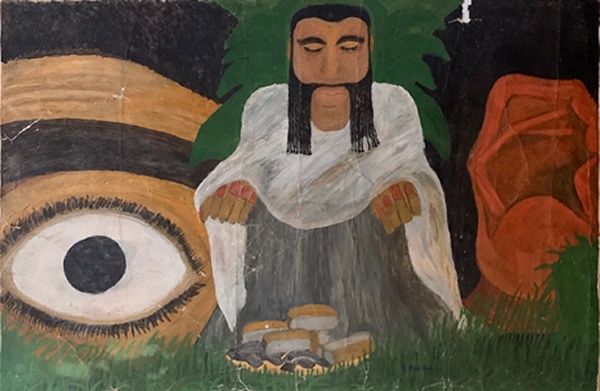I was born in 1971 in Brazil.My experience began when in high school I worked for two years as a designer in a printing house, where I learned to work with various materials and design techniques, and also had the first contact with the printing techniques that would mark my life.
At that time, when I had decided to pursue an artistic career, I struggled to master drawing (making use of crayon and ink) and painting (with Indian ink, watercolor, acrylic and oil) making anatomic studies and landscapes, while I tried to make money with the sale of my work through exhibitions.
To learn more about the artistic field I attended the College of Visual Arts in Pelotas, Brazil (1993-1997), which awakened in me a passion for engraving. I had the opportunity to be a student-monitor and to have extended stays the studio.

In 1998 I studied drawing, engraving and printing in the Atelier Livre in Porto Alegre in Southern Brazil. In 1999, at the invitation of the Danish engraver Torben Bo Halbirk, I attended a training in residence in order to specialize in the technique of engraving (Heyter method) in his studio in France, which resulted in an exhibition in Paris.
From there, settling in Paris, I tried to learn as much as I could from all the experiences I have been presented in France and neighboring countries, through invitations to teach and attend workshops, exhibitions, performances and curate shows.
In Paris I lived in a Reformed Church in the neighborhood of Belleville, where I had the opportunity to work with many artists from other fields like the music, dance, film, web design, theater, and participate in the Belleville Artist’s Association and La Fonderie. This was a time that I could experiment with several material and spaces.
In the following years I studied also in Luxembourg (water-ink) and Spain (lithograph).
Returning to live in my hometown in 2004, I joined as a teacher in the College of Arts, teaching drawing and engraving, for a period of three years. Currently I work full-time in my own studio.
.jpeg)
Work process
The starting point of my research comes from the way the work is done: manière in French comes from main (hand). ‘Art is made with hands, which are the instruments of creation, being the vehicle of knowledge of the body’ (Focillon, 1947, p. 112).
The techniques I use are not an end in themselves but an indispensable tool in the development of ideas. Art requires a process in which the artist in order to create the work ‘invents his own way of doing it’ (Pareyson, 1991, p.59). The themes that I represent are selected for their potential symbolic and visual power, which means that my work is more representational or symbolic than figurative.
I tend to draw much of the time. I am sure that I draw better than I write. Perhaps the traces on the paper are to me like handwriting: I record my day-to-day experiences with drawings. My sketchbooks tend to succeed one another.
I have sketchbooks of various sizes for use as needed: I like to draw when I am in theaters, attending lectures, concerts, in the bus or train (once I did 100 drawings going by train from Paris to Brussels), in front of the TV or the computer. I draw on any type of paper, new or used, even on old books or magazines. I also have the old habit of cutting out magazines and newspapers to save images that I find interesting. The pictures that are shown here are the fruits of these exercises.
.jpeg)
I like to vary the techniques, from woodcuts to watercolors, Indian ink, acrylic, oil, lithography to etching or crayon. Similarly I experiment with different media: the last work I have done called Surveillance was made with lavis acrylic on canvas, something unusual that I had never done before. I always try to make the technical speak to the theme of the work. Material and process are always interwoven, since the act of manufacturing brings me ideas for new works. Thus I feel somewhat like a bricoleur (handyman), as the anthropologist Claude Lévi-Strauss wrote: ‘As art falls midway between scientific knowledge and mythical thinking, it is known that the artist has at the same time something of the scientist and bricoleur, who produces a material object that is also an object of knowledge.’
The creation process I adopt is based on balancing structure and accident, seeking dialogue with the model and the matter, while also taking into account reception research and the message of the work.
As a bricoleur I try to make the best use of the materials I have in my hand, which is connected with what is being said and the world of ideas.
Website
A selection of my works may be seen on the web at www.lettnin.blogspot.com.
%20(1).png)











.jpeg)
